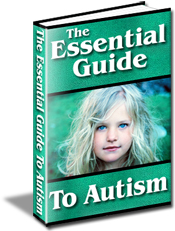Understanding The Pdd Autism Link
Click Here To Know The Simple Methods To Effectively Spot The 31 Signs of Autism
Autism comes under the PDD (pervasive development disorders) umbrella For the longest time, kids who had PDD slipped under the radar and did not get the correct diagnosis, instead they were given labels by others who did not understand them. They were called shy, weird, or just ?different?. These problems, as it turned out, are related to PDD autism. Though classic autism was diagnosed long ago, there are high-functioning forms that are now just being understood and diagnosed. These are the children that were often misunderstood and teased. Research and understanding now allows these children enjoy a more ?normal? way of life.
The word normal is something that should be used carefully however. What is normal for one child is not for another. There seems to be a standard range of accepted behavior and development though, and those with PDD often fall outside those ranges in some areas.
Many with PDD can blend in, but they are often singled out eventually. Many of them say that PDD makes them who they are, and they would not change that for the world. However, because they want to interact with others who do not have autism, they do have to learn to adapt. There are programs now that are designed just to help these children with the social and communication problems they often have.
Almost every child with a PDD has communication issues. Some have no vocabulary, and some have a very extensive one. Some never utter a word, but instead, choose to communicate through hand motions. There are many problems, even for those with large vocabularies. Though they know the words to use, they often use them in the wrong context, or use them in the literal sense only, which can lead to misunderstandings on both sides of the conversation. Just think about the everyday expressions like ?raining cats and dogs? or ?going hell for leather? ? pretty confusing if taken literally.
Social settings can be huge problems for children and adults with PDD autism. Many want to interact with their peers just like everyone else, but it can be very painful for them. They lack the skills needed for this type of friendship. There are times when they say the wrong things, and they can have a problem with maintaining eye contact. Failed attempts at socialization can become frustrating and they may choose to retreat into their own world where they are safe from disappointments. Many think they want to be alone, but this usually comes after they have tried to relate to others and fail. Once they fail, they feel safer on their own, and begin to develop a preference for that.
In most cases, children will be diagnosed with PDD autism by the ages of three or four. Though this is not true in all cases, a majority will know before they reach school age.
Other than social and communication problem, there are other common PDD signs. These can include repeated motions, and a tendency towards having tantrums for small things like a shift in routine. There can be aggressive behavior is some, and that is usually due to failed attempts to communicate feelings or messages. Some are overly sensitive to noise and other stimuli, and others seem to be unaware of things going on around them. No two children will exhibit the same symptoms. It is thought that early diagnosis is best, and can lead to a better life all the way around for those with PDD autism.
By Rachel Evans. Sign up for a free newsletter about autism and discover more on the signs and symptoms of autism
Labels: autism_christian_contend_good_mistaken_parent_too_too_unkind_wise, autism_from_idiot_in_other_send_side_story, autism_geodon, autism_seroquel, autism_society

